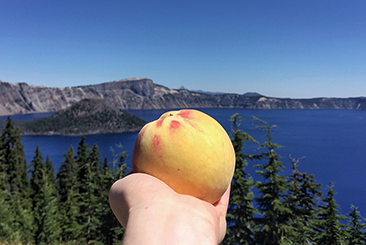How to Make Mayonnaise from Scratch (with Video)

RECIPE UPDATED 9/30/22
Homemade mayonnaise is delicious, healthy (relatively speaking), and takes about 5 minutes to make with ingredients you almost certainly have in your kitchen. Not only is mayo quick to whip up, but the hand-mixer method has never failed me and requires minimal cleanup.
Perhaps you're stuck back where I mentioned that mayonnaise is healthy. What about cholesterol and fat? Mayo "on the side" forever. Let's put that 90s anti-mayo rhetoric to rest. There is exactly one egg yolk in this recipe which results in over a cup of mayonnaise and, as it turns out, eggs are not the enemy. In terms of fat, do you like nuts and avocados? That same "good fat" is in homemade mayo thanks to the olive and quality neutral oils. No preservatives, no ingredients that you can’t pronounce, and the flavor is tops. Your coleslaw, sandwiches, salads, and dips will never be the same. As the Two Fat Ladies said,
"You mustn't be frightened of mayonnaise."
What's the difference between aioli and mayonnaise?
Aioli
An authentic aioli is a Mediterranean sauce containing garlic, coarse salt, and oil - that’s it. As The Food Lab points out, many chefs and restaurants list “aioli” on the menu when it's really just garlic-flavored mayonnaise. Fancy words make people feel better about what they’re eating. At a minimum, mayonnaise should contain a healthy portion of garlic to be called aioli.
Mayonnaise
Mayonnaise is an emulsion of egg, oil, and an acid such as lemon juice or vinegar.
Recipe Tips
Methods
UPDATED
My preferred and (thus far) foolproof method for making mayonnaise is to use a large bowl and hand mixer. This approach has never failed and the texture is beautiful for days. I've seen various recipes suggest an immersion blender or food processor as alternative tools. In The Food Lab, using a food processor involves freezing the oil which I didn’t want to bother with (plus, I try to avoid cleaning the food processor when possible). In terms of the immersion blender, I’ve read comments suggesting people have mixed results with that tool. If the jar isn't just the right size, apparently you can end up with an oily mess. Plus, scraping the mayonnaise off of the immersion blender and around the blade is kind of a hassle. Hand mixer it is.
The update is that I am now a mini food processor convert when it comes to making mayonnaise. To be clear, I don't use the large food processor - it's my 3-cup Cuisinart that makes gravity-defying mayonnaise in about a minute. The two holes in the top control the flow of oil which ensures you don't break the emulsion. I use the mini Cuisinart for all sorts of dishes but would buy it just for mayonnaise now that I know its powers. With all of that said, I still use a hand mixer when a mini-prep isn't available.
Eggs
- Use fresh and room temperature egg yolk(s). My post Why do eggs need to be room temperature? is worth a read as it explains some of the science behind freshness and temperature.
Bowl
If your bowl is sliding around, place it on a silicon trivet and it will stick in place.
Oil Type
I tried making mayonnaise entirely with olive oil but the olive oil flavor ended up being too dominant. Adding in a quality neutral oil balances things out.
Adding Oil
- Do not add the oil when the mixer isn't running.
- Take your time when adding the oil, especially in the beginning. If at any point the emulsion appears greasy, stop, scrape, beat, and then continue adding the oil.
- I angle the hand mixer slightly so that I can drizzle oil right into the spinning blades.
- Stop and scrape the bowl when you're almost done - helps ensure there aren't any stray oil pockets.
Salt
As The Food Lab rightly points out, mayonnaise wants more salt than you might expect. The flavor is relatively flat without the right amount of seasoning. Take it slow when making adjustments but be sure to tweak things at the end.
Refrigerate
Homemade mayonnaise benefits from a night (or several hours) in the refrigerator as it allows the flavors to marry up.
Neutral Cooking Oils
I did some research on cooking oils and ended up down the proverbial rabbit hole. You can never quite tell if the Internet is trying to educate people or make them fantastically ignorant. I'm not a nutritionist so this section simply highlights my semi-informed (possibly ignorant?) takeaways. Also, I found this chart to be very helpful.
Oils I'm Sticking With
- Olive - My oil of choice whenever possible and generally speaking there isn't much to not like about it from a nutrition standpoint.
- Peanut - Has a high smoke point and can be used in moderation for frying.
- Almond - Has a pretty high smoke point, neutral flavor, and there don't seem to be any glaring health drawbacks. Similar to peanut oil, almond oil isn't a source of omega-3, but it's lower than many oils in terms of the overall omega-6. Again, I'm not a nutritionist. Just looking for the middle ground with these things.
Oils I Plan to Try
- Avocado - The nutrition specs look good but it's a little more expensive.
Almond - Has a pretty high smoke point and neutral flavor.Tried - moved to "Oils I'm Sticking With".- Expeller-pressed canola oil (maybe). Still on the fence about this one in terms of how it's processed.
Oil I'm Ditching (...for the most part)
- Grapeseed - Grapeseed oil was high on my list until I learned that its ratio of omega-6 to omega-3 is 693:1 which is way out of whack. The information I found was relatively unanimous in suggesting that grapeseed oil should not be a first choice when cooking. (For reference, olive oil's ratio is 12:1.) Grapeseed oil is probably fine in small amounts but I won't be using it for mayonnaise or baked items. In terms of omegas, my understanding in brief is:
- Omega-3 and omega-6 are "essential" fatty acids that our body needs but doesn't produce on its own. We have to get them from food or supplements as they're critical for the brain and nervous system.
- It is suggested that the excessive omega-6 fatty acids and insufficient omega-3 fatty acids in modern Western diets is contributing to various health ailments. Specifically, the former is linked to inflammation. The goal is to eat a balance of omega-6 and omega-3 - I've seen ratios of 1:1 up to 10:1 suggested as a target. That being said, there seem to be widely varying opinions on a definitive ratio. Americans apparently eat 14 to 25 times more omega-6 than omega-3. This page goes a bit deeper on the subject.
- Omega-6 and omega-3 are frenemies. Though they both help our body, they also compete for resources in order to do their job. This speaks to the importance of keeping the ratio of these fatty acids somewhat even .
In summation, moderation and balance. Words to live by.

Tools
Farmers | Artisans
I make an effort to source my food from local California artisans with a special focus on the Santa Monica Farmers Market. Below is a list of the talented folks who contributed to this dish.
- Trattore Farms / Olive Oil
- Polito Farms / Lemon
- Milliken Family Farms / Heirloom Garlic
- Schaner Farms / Eggs
Ingredients (Adapted from The Food Lab)
- 1 egg yolk, room temperature
- 1 teaspoon Dijon mustard
- 1 3/4 teaspoons freshly squeezed lemon juice
- 1/2 medium garlic clove, pressed or grated Note: See my thoughts about methods for processing garlic in this post. Also, garlic really stands out in mayo so perhaps start with 1/4 clove and adjust up from there.
- 1 teaspoon water
- 1 3/4 teaspoons apple cider vinegar
- 1/2 cup quality neutral oil. Note: I originally used grapeseed oil but have since stopped using it in large quantities. See "Neutral Cooking Oils" above. I tried avocado oil in this recipe but feel it imparts too distinct of a flavor and also makes the mayo green. I use almond oil now.
- 3/4 to 1 teaspoon Diamond kosher salt, to taste Note: I add 3/4 teaspoon to the initial mixture and then adjust up as needed once the mayonnaise is finished.
- 1/2 cup mild extra virgin olive oil
- Freshly ground pepper
Instructions (Takes about 5-7 minutes.)
- Combine the olive and almond oils in a measuring cup that has a spout.
- Combine the room temperature egg yolk, salt, Dijon, lemon juice, garlic, water, apple cider vinegar, and salt in a large bowl then beat briefly until just combined.
- With the mixer running, slowly add the oil. Note: See "Recipe Tips" above.
- Stop the mixer when you're almost done adding the oil and scrape down the sides of the bowl.
- Crank the mixer up to high one last time to make sure every bit of oil is incorporated.
- Adjust the salt as desired. I usually add a bit more -- 1/8 to 1/4 teaspoon.
Storage
I have used mayonnaise up to a week after making it and the flavor/texture was excellent. When I asked The Google about shelf life, there were sites suggesting you could use the mayo for 2 weeks which seems a little long. There are a couple of factors at play with this. First, you have a raw egg in the emulsion so you want to make sure the egg is fresh if you're looking to stretch out the storage time. Second, the flavor of mayo starts to get a bit dull after a while. I find that the same thing happens with preservative-free salad dressing. That being said, it's so easy to use up the mayonnaise that you likely won't have an issue with leftovers.
Video Music
The song is my YouTube video is Dad's Gettin' Fuzzy by Dutch Coleman and Red Whitehead (public domain) and was recorded in the 1920s. Unfortunately, I wasn't able to find much info on these guys. Here's a blurb from the site that featured the song:
Some blistering harmonica boogie from “blues harp” masters Dutch Coleman and Red Whitehead. Expertly shaping the tone with their breath and their mouths, this duo of innovators created a trance-inducing sound way back when, and lucky us, they recorded it. Pure instrumental goodness with two guys jamming full-on and stompin’ their feet.






